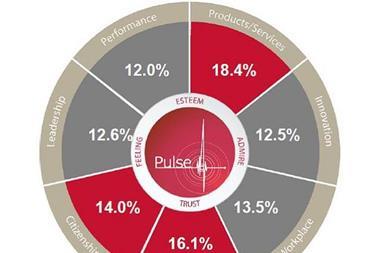Essential yet intangible, and so easy to lose, reputation must be a top priority for any organisation's risk manager
Anyone wanting to illustrate the upside of risk could do a lot worse than study the saga of Gordon Brown’s alleged ‘bullying’, which is unfolding just as this article is being prepared.
At the time of writing, yesterday’s apparently disastrous headlines are already becoming history. The head of the anti-bullying agency, the person who made the most sensational allegations, is discredited. People are coming forward to describe the ‘Prime Monster’ (as the Sun originally labelled him) in glowing terms.
The Sunday Times columnist Rod Liddle goes on radio to announce that having a tough boss made him the journalist he became. The normally anti-Labour Daily Mail is comparing Brown with Churchill, pointing out that the wartime leader also lost his temper occasionally. Those Number Ten staff who complained of intimidation at the hands of the Prime Minister are portrayed as ‘wimps’. Sarah Brown’s description of her husband as a “strong, hard-working, decent man” is widely quoted.
In reputation as in other aspects of business, risk and opportunity are truly two sides of the same coin.
As luck would have it, these events took place about a day too late for what was a very lively AIRMIC roundtable to discuss reputational risk. At the centre of the debate was the role of the risk manager. Is reputational risk management a separate discipline or little more than a consequence of what the risk manager does anyhow?
They are relevant questions partly because surveys by AIRMIC and others consistently find reputation to be near the top of risk manager concerns. Indeed, before the recession gave prominence to various types of financial risk, reputation competed with business continuity for the number one slot.
It is easy to see why. A good name is often a company’s biggest asset. It is impossible to insure fully yet easy to lose. There are many examples of sudden PR calamities – Gerald Ratner being the most famous and Toyota perhaps the most current. As a participant in our roundtable pointed out, however, it is more common to find ‘death by a thousand cuts’.
An accumulation of relatively minor setbacks and poor stakeholder experience can be just as deadly, usually accompanied by a swing in corporate culture away from putting the customer at the centre of the decision-making process. Unless you are vigilant, you may not even notice until it is too late. Look at British Leyland and, more recently, Woolworths and Marks & Spencer before it recovered its position.
Like risk management, reputation lies at the heart of a successful organisation, but the dynamics are often poorly understood. This is partly because most people regard it as an intangible subject, and the role of the risk manager is ill-defined. A seminar of senior executives last October, chaired by Anthony Fitzsimmons of Reputability, noted that conventional risk maps and approaches may not work for reputation.
There was a clear message from the event that most companies place insufficient emphasis on reputational risk, a feeling supported by a survey of AIRMIC members in February. Only 43% felt their organisations had ‘a well communicated policy to manage reputational risk,’ 58% that ‘managers throughout the organisation are aware of the importance of managing reputational risk and 44% that reputational risk exposures ‘are assessed against each of the major stakeholders’.
These considerations are among the factors behind AIRMIC’s decision to commission a research project from the Cass Business School into the impact of risk interventions on reputation, with the first of three instalments to be published at its annual conference in June. The study will look in particular at the relationship with share price and profitability.
As part of this work, Cass will produce detailed case studies involving organisations that suffered serious setbacks to reputation at least six years ago (i.e. far enough away to assess outcomes). They will consider the extent to which risk management lessened the damage and hastened recovery. The hope is to identify common attributes that explain the difference between success and failure.
Without wishing to pre-empt the findings, a number of themes have emerged from AIRMIC’s existing work. Risk managers overwhelmingly agree that reputational risk management is crucial to their organisations, but only a minority (6% of respondents) say it is an area where they themselves lead.
Most risk managers believe it is a sufficiently important and diverse subject to be driven at board level, with the CEO easily topping the poll in terms of who has the biggest part to play. Among non-board members, the head of public relations (or similar) is most likely to be perceived as having the lead role. This diversity was only to be expected; different organisations will have different approaches and structures.
What emerged loud and clear from our roundtable is that, like risk itself, reputation works when it has buy-in from everyone. What point is there in having a well thought-out policy to promote reputation if front-line staff who deal with the public do not feel part of it?
Reputational risk is, therefore, something that requires input and ownership across all departments. Risk managers can have a vital role to play in bringing people together where they see failings, acting as a catalyst and ensuring that reputation influences all they do. That statement leaves, of course, lots of unanswered questions. We hope that the Cass research will answer many of them.
Postscript
Mark Baylis provides public relations support to AIRMIC (the Association of Insurance and Risk Managers)



















